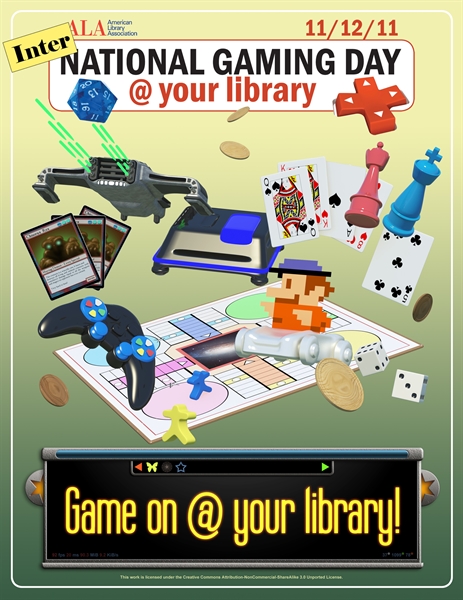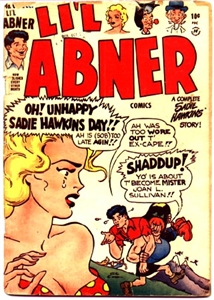International Games Day 2024 is on Friday, November 1, 2024: Perfect World International vs Runes of Magic, which is better?
Friday, November 1, 2024 is International Games Day 2024. Library Press Kit « International Games Day @ your library International Games Day
As an Amazon Associate I earn from qualifying purchases.

Runes of Magic is a pretty fun game, I've played both PWI and RoM, but I chose to stay with PWI, at least for now.
Unlike PWI, RoM focuses on other aspects of the game other than just killing. Features like a player-owned house, guild castle and bank, and an ample amount of crafting skills give players something to do other than killing a trillion creatures over and over.
RoM also allows players to create characters that are based on their fighting preference. In PWI, players are limited to one class that often features a right and wrong way to play them. In RoM, there is a duo-class system, so that a player can chose two classes to incorporate into their character. Of course there are always better and worse ways to go when choosing two classes, but it at least allows for more customization.
In PWI, the fighting system is basically select a monster and press the attack buttons. In RoM, players have to control their character a bit more closely. You must be facing a monster to attack it (meaning your character will not turn around automatically) and this can be a bit tricky when getting double-teamed. However, it does offer more of a challenge.
The Cash Shop options in PWI are such that most items are permanent and with enough in-game coin, every item in the shop can be obtained without spending real money on the game. In RoM I noticed that most of the items have a time limit, so outfits and items for your house are obtained for temporary use only. I don't like that, and I'm not sure if these items can be obtained using in-game coin.
A final note on RoM is that there is a bit of User Interface lag. This means that sometimes when you click something, it doesn't register like you have done anything. This can get frustrating sometimes, but perhaps it's something you get used to after playing for awhile.
That's pretty much my coverage on both of the games. If you have any questions feel free to contact me (email on my profile). A lot of times I find that people get bored of PWI because they simply have chosen the wrong class for what they want to do, have incorrectly placed the points on their character, or don't have a faction. I'm willing to help you out if you need it.
The only other (free) mmo game recommendation I can give is RuneScape. I played this game for years and really enjoyed it during that time. This is a game for people who love working on skills (they have like 28 of them to level) and like to use their minds to complete quests. It's not a "true" mmo in the fact that there are no (permanent) guilds, no hot keys, defined classes, or attack styles. This game is one of those that you either love it or hate it.

Does anyone know any training games related to cultural differences?
On that day, a Tuesday, she decided to make the blue-eyed children the superior first, giving them extra privileges like second helpings at lunch, access to the new jungle gym and five minutes extra at recess.[2] She would not allow blue-eyed and brown-eyed children to drink from the same water fountain.[4] She would offer them praise for being hard-working and intelligent. The “brownies” on the other hand, would be disparaged. She even made the brown-eyed children wear ribbons around their neck.[2]
At first, there was resistance to the idea that brown-eyed children were not the equals of blue-eyed children. To counter this, she used a pseudo-scientific explanation for her actions by stating that the melanin responsible for making brown-eyed children… also was linked to intelligence and ability, therefore the “brownies” pigmentation would result in lack of these qualities.[2] Shortly thereafter, this initial resistance fell away. Those who were deemed “superior” became arrogant, bossy and otherwise unpleasant to their “inferior” classmates. Their grades also improved, doing mathematical and reading tasks that seemed outside their ability before. The “inferior” classmates also transformed – into timid and subservient children, including those who had previously been dominant in the class. These children’s academic performance suffered, even with tasks that had been simple before.[4]
The following Monday, Elliott reversed the exercise, making the brown-eyed children superior. While the brown-eyed children did taunt the blue-eyed in ways similar to what had occurred the previous Friday, Elliott reports it was much less intense. At 2:30 on that Monday, Elliott told the blue-eyed children to take off their collars and the children cried and hugged each other. To reflect on the experience, she had the children write letters to Coretta Scott King and write compositions about the experience.[2]
This exercise changed her life, both as a teacher and personally. Her reflections on what she had witnessed would influence how she would approach race relations and teaching. “She had not told her pupils to treat each other differently, only that they were different; and yet they developed the characteristic responses of discrimination. Jane Elliott felt that they did this because they had already absorbed discriminatory behavior from their parents and other adults.”[4] Their willingness to accept the inferiority of a group of people was no small part due to the fact that children believe what adults, including teachers, tell them and follow their example. However, the brown-eyed students who had experienced discrimination on the previous Friday, seemed to modify their behavior when it was their turn to be “superior” on Monday. While they did exhibit some of the same discriminatory behaviors, they were much less intense supposedly because they already knew what it was like.[2] The exercise seemed to suggest that black underachievement was a product of “white-dominated constructions of reality”. [1] She believes that what has been taught in schools (1968 to the present) conditions students that whiteness is the objective. Schools teach virtually nothing of what people of color have contributed to mankind while most people would have little trouble naming 10 white males who have done so. “That’s called racism, people,” according to Elliott, as she believes it is racism to deny or ignore what other people contribute. Elliott believes that teachers perpetuate racism by how they interact with their students. Teachers will call on white boys first, then white girls. They also establish a hierarchy based on who they pay attention to, where students are seated and how groups are formed.[3]
Because she believed so strongly in the value of this exercise, Elliott continued it every year, whether her students asked for it or not until 1984 when she quit teaching in the Riceville school system. However, she never involved these children’s parents because “It was the parents who were the cause of the racism that these kids displayed.”[5]
As much as Elliott believes in her exercise, she advises caution and restraint in implementing it. In fact, it is not implemented in most educational settings because, Elliott claims, “it is too controversial and too difficult to do”. To be an “educator” and not merely a “teacher”, one must “lead people out of ignorance.” To do this, Elliott recommends that teachers read books like “The Psychology of Blacks”, “Two Nations” by Andrew Hacker, “A Country of Strangers” and “Arabs and Jews in the Promised Land” as well as papers and books written by Judith Katz and Peggy MacIntosh because teachers themselves need to overcome what they were taught before they can educate children. If they cannot do this, they should not do the blue-eyed/brown-eyed exercise. They must also do the exercise for the right reason – not just to “get their names in the paper”. She also recommends that teachers do it at

DIFFERENCES BETWEEN ONE DAY AND TEST MATCH CRICKET????????? CRICKET FOR BEGINNERS HELP????????? EXPLAIN PLS?
One Day Cricket...
also known as ODIs (One day internationals) is as the name suggests, a form of cricket which takes place on just one day. In one day cricket the tactics are a lot more aggressive, batsman hit out for boundaries (4 and 6). The world cup is held every 4 years and contains every international cricket team in the ICC (international cricket council). an ODI has 100 overs in total... 50 batting overs for each team. Their are many more teams playing ODIs that test matches... teams like: afghanistan, kenya, america and canada have been known to compete in ODIs. ODIs can be run during the day or as day/night games
Test Matches...
these games are the original forms of cricket, they run over five days, each team has 2 innings (chances to bat). in a test match there is no set amount of time allocated to each batting side... it just depends on when the bowling side bowls out the batting side or the batting side "declares". Declaring is when the batting side finishes batting before being bowled all out (10wickets). the decision to declare is made by the captain. in a day of test cricket, there are two main breaks (lunch and tea). test cricket usually has about 80 overs per day (sometimes up to 100 depending on bowling side)
























